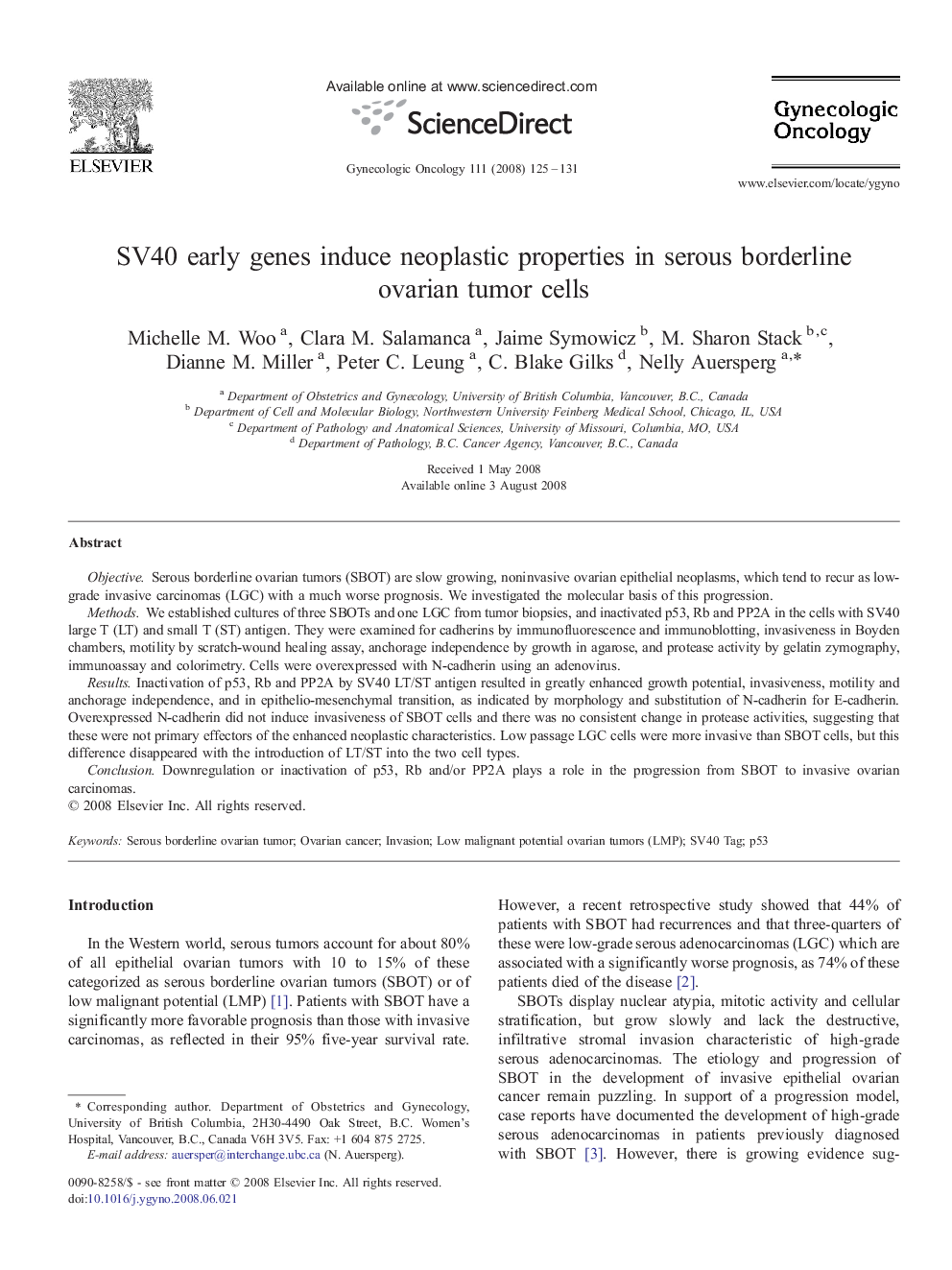| Article ID | Journal | Published Year | Pages | File Type |
|---|---|---|---|---|
| 3947497 | Gynecologic Oncology | 2008 | 7 Pages |
ObjectiveSerous borderline ovarian tumors (SBOT) are slow growing, noninvasive ovarian epithelial neoplasms, which tend to recur as low-grade invasive carcinomas (LGC) with a much worse prognosis. We investigated the molecular basis of this progression.MethodsWe established cultures of three SBOTs and one LGC from tumor biopsies, and inactivated p53, Rb and PP2A in the cells with SV40 large T (LT) and small T (ST) antigen. They were examined for cadherins by immunofluorescence and immunoblotting, invasiveness in Boyden chambers, motility by scratch-wound healing assay, anchorage independence by growth in agarose, and protease activity by gelatin zymography, immunoassay and colorimetry. Cells were overexpressed with N-cadherin using an adenovirus.ResultsInactivation of p53, Rb and PP2A by SV40 LT/ST antigen resulted in greatly enhanced growth potential, invasiveness, motility and anchorage independence, and in epithelio-mesenchymal transition, as indicated by morphology and substitution of N-cadherin for E-cadherin. Overexpressed N-cadherin did not induce invasiveness of SBOT cells and there was no consistent change in protease activities, suggesting that these were not primary effectors of the enhanced neoplastic characteristics. Low passage LGC cells were more invasive than SBOT cells, but this difference disappeared with the introduction of LT/ST into the two cell types.ConclusionDownregulation or inactivation of p53, Rb and/or PP2A plays a role in the progression from SBOT to invasive ovarian carcinomas.
